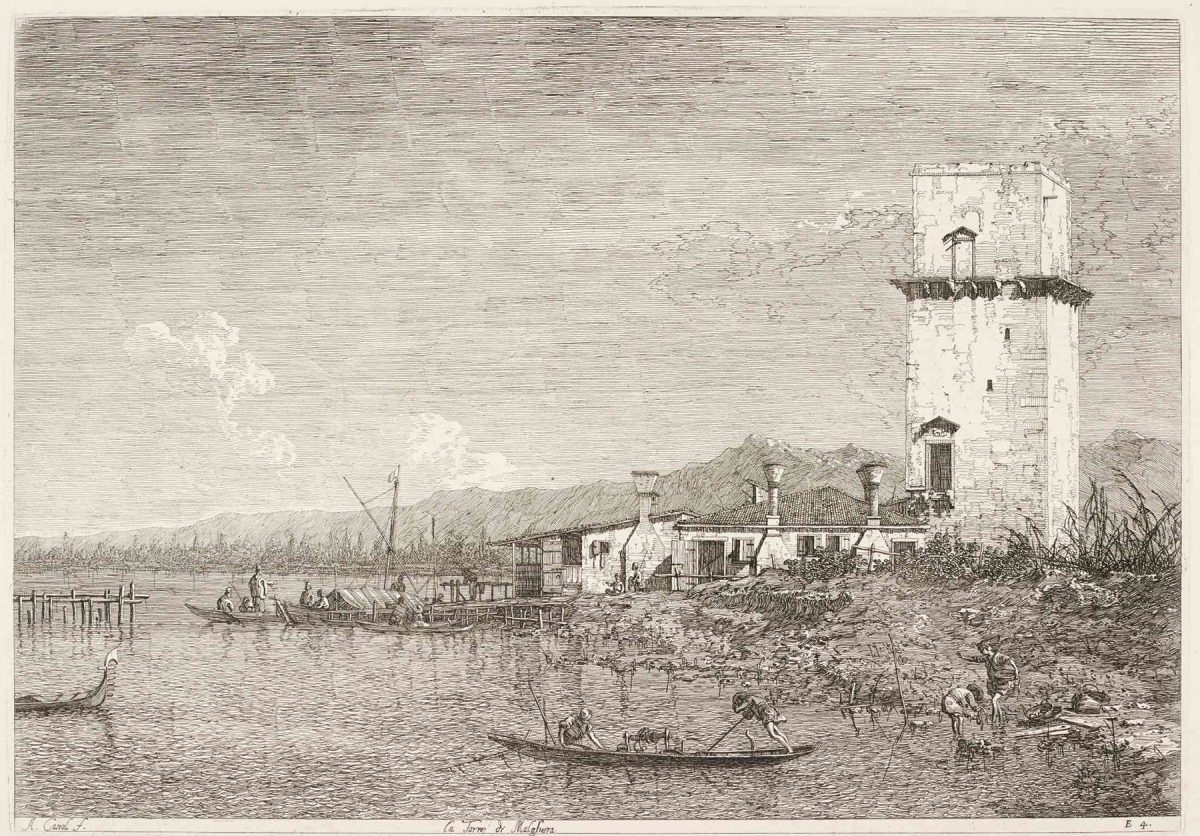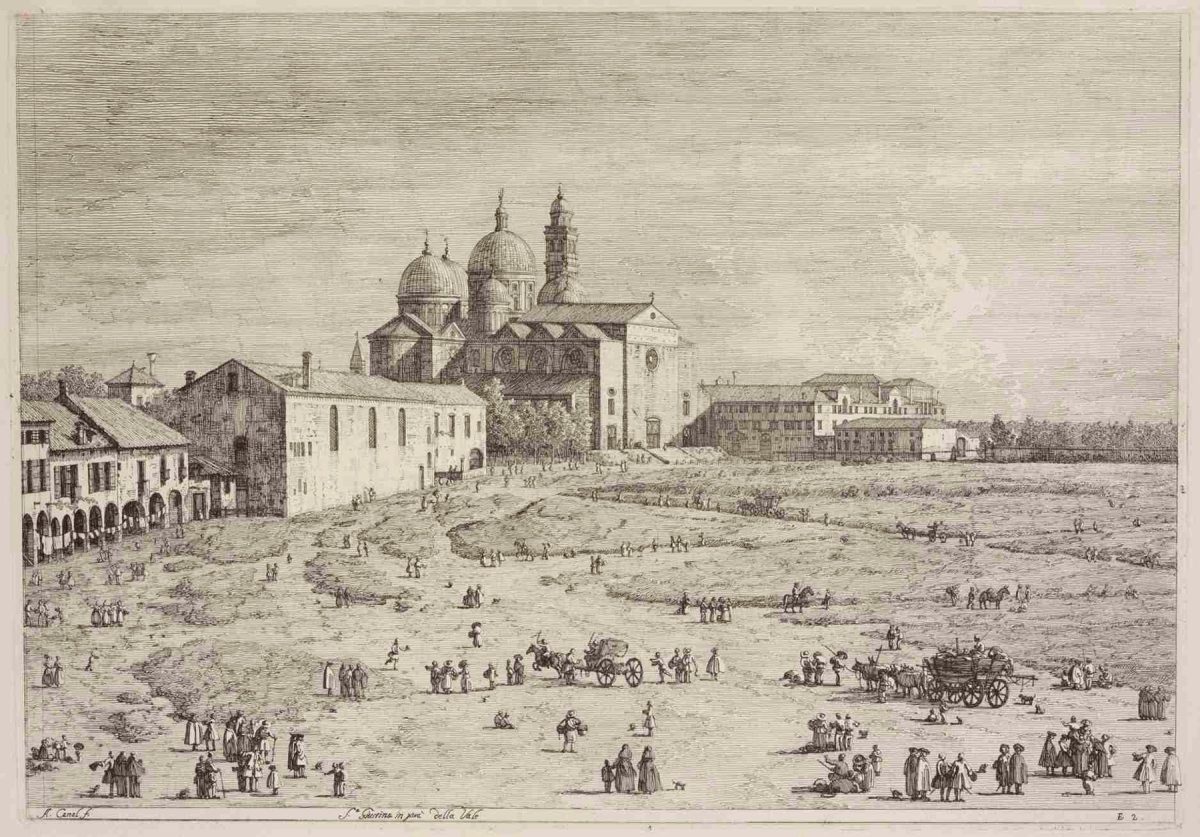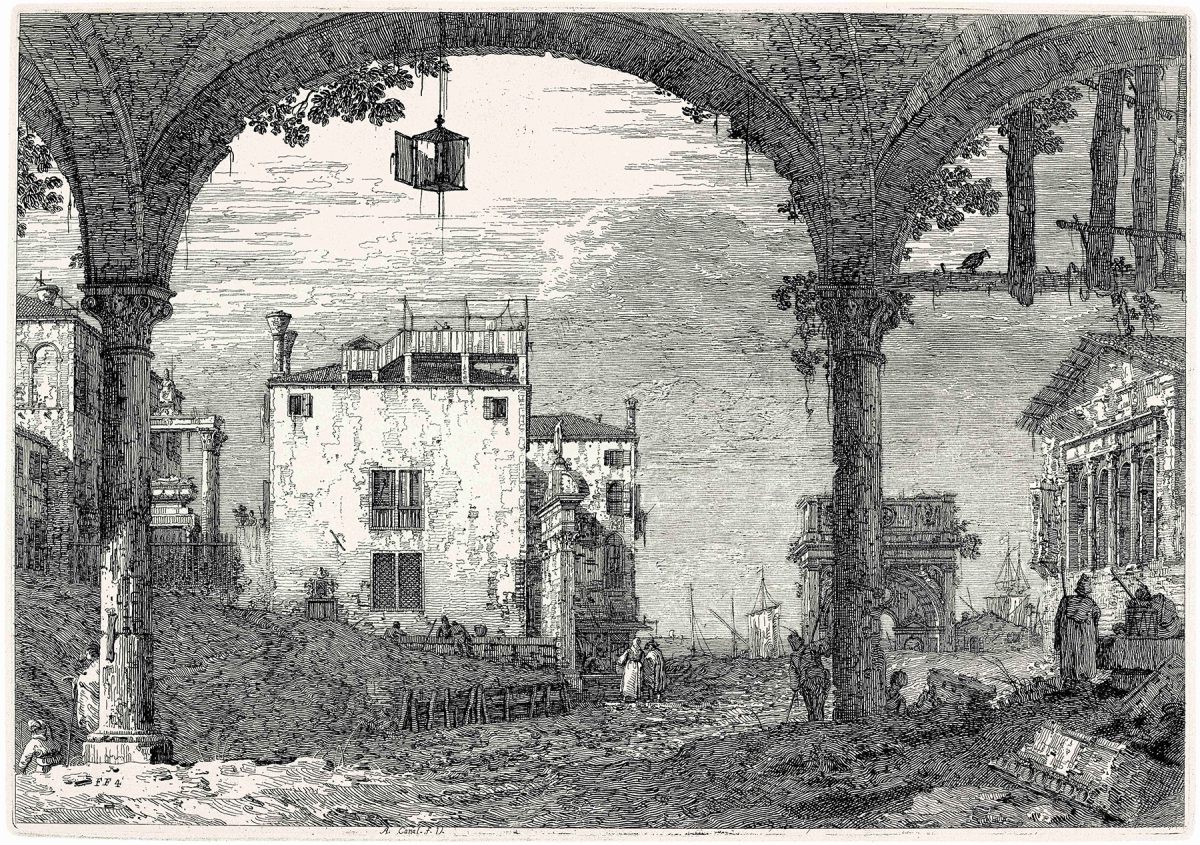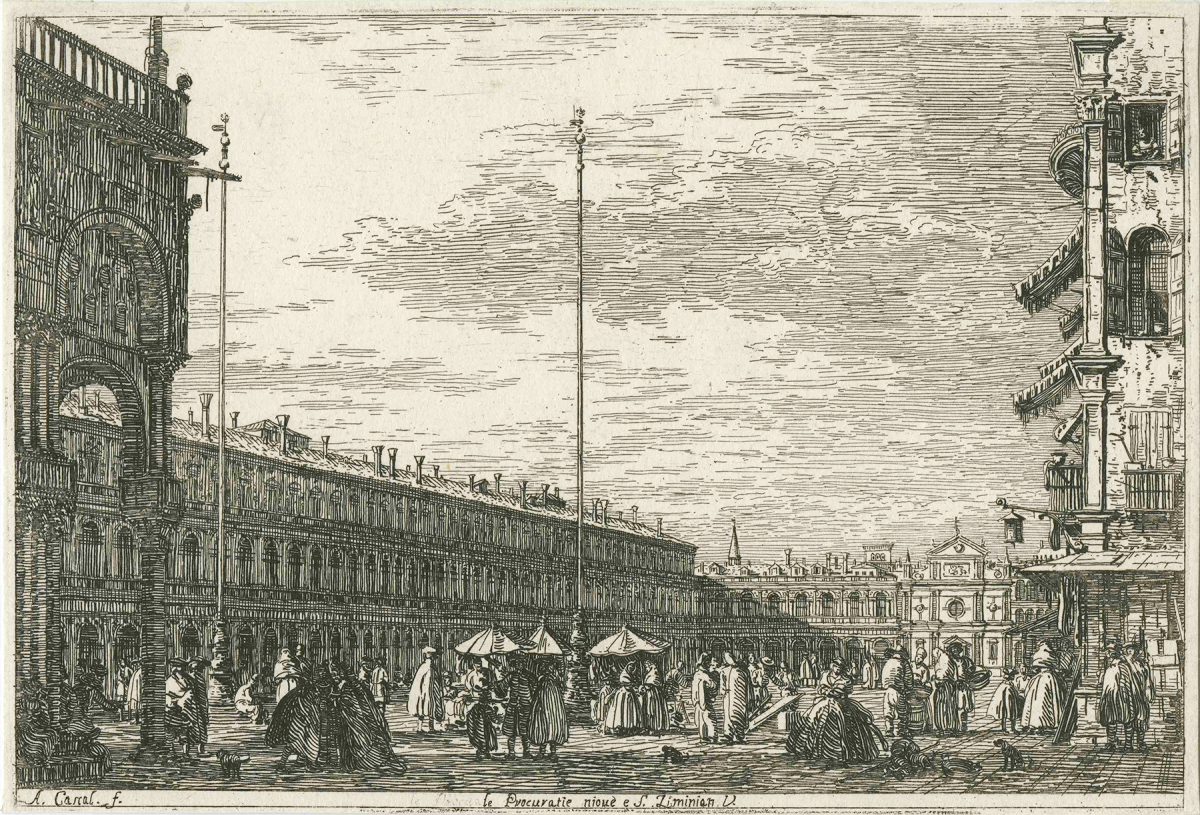In eighteenth-century Italy, artists began painting and engraving cityscapes of the historical monuments and architectural gems that were popular tourist destinations at the time. These images, known as vedute (Italian for “views”), were soon a genre unto themselves, of which Canaletto in Venice, then Piranesi in Rome, became the undisputed masters. These vedutisti depicted the topographical facts of their respective cities with an astonishing degree of realism. At the same time, close looking often reveals their works to have been imbued with fantastical architectural details, elements that existed only in the artist’s imagination.
The artist Gérard de Palézieux, who was himself inspired by the light of Venetian lagoon, was quick to admire Canaletto’s elegant solutions to depicting its atmosphere in his remarkable etchings. Guided by this twofold passion, he assembled a remarkable collection of 48 prints by the Venetian, the most complete collection of Canaletto's etchings after those of the British Royal Family (Windsor Castle) and the Berlin Museum Prints Department.
Giovanni Antonio Canal, better known as Canaletto, began his career in the Venice studio of his father, a theatre set designer, but he soon abandoned that profession in 1719 to move to Rome and train as a painter. In Rome, Canaletto produced his first landscape and cityscape views, but he returned to Venice the following year. Painting in the style of Luca Carlevarijs, who had pioneered vedute painting at the turn of the century, Canaletto quickly acquired a significant reputation. His luminous views of Venice became highly prized in the 1730s, thanks in part to British merchants based in Venice who acted as his intermediaries. One of these dealers, Joseph Smith, who was later appointed British Consul at Venice, played a key role in Canaletto's career, helping introduce him in 1740 to the etching process. In a matter of years Canaletto published what amounts to a masterpiece: the Vedute, altre prese da i luoghi, altre ideate (Views, some taken from places, others imagined) (1744), a collection of thirty-one plates. In these etchings, Canaletto included life-like views of Venice and its surroundings (the vedute) as well as imaginary flights of fantasy(the capricci), such as his famous Portico at the Lantern. In the mid-1740s, a decline in commissions led Canaletto to move to London, where most of his clientele lived—though after around ten years in England, in 1756, he returned to Venice. Although less productive, this last period of his career was marked by his 1763 election to the Academy of Fine Arts in Venice, a rare achievement among vedutisti. Though etchings were relatively minor in his overall output, which mainly consisted of paintings, Canaletto occupies an important place in the history of the medium. His etchings, all produced in the early 1740s, demonstrate an unequalled mastery of the process. Made with a sober, direct style, his works convey Venice’s light with remarkable tonal subtleties, following it as it reflects upon the city’s buildings, skies and waters.




